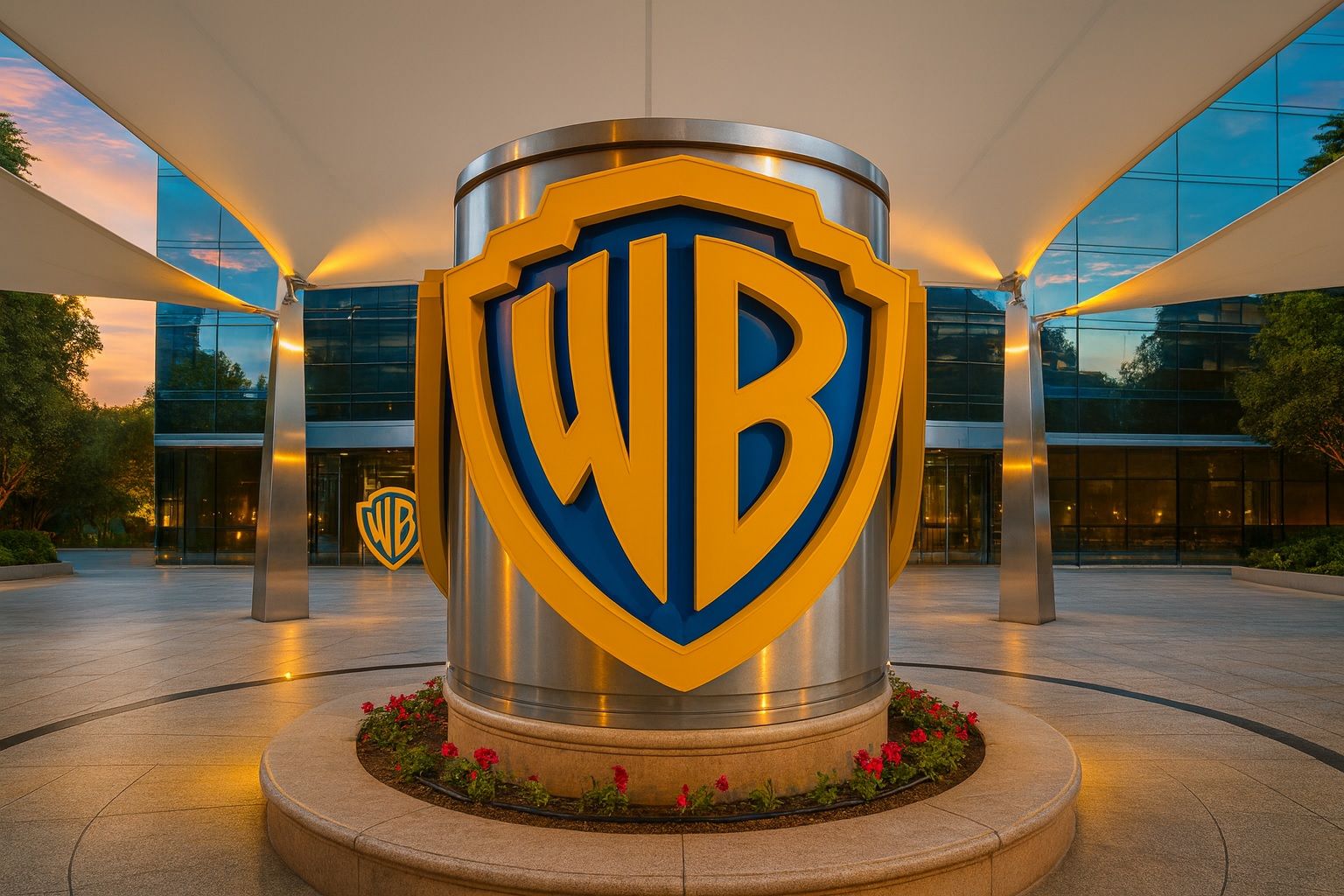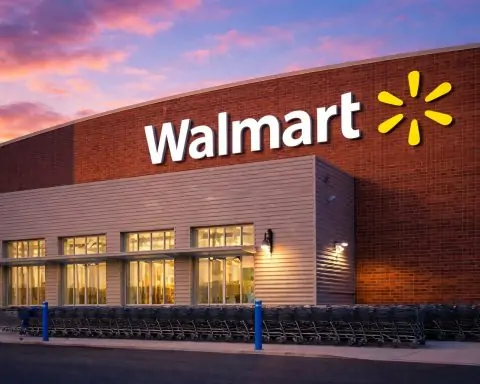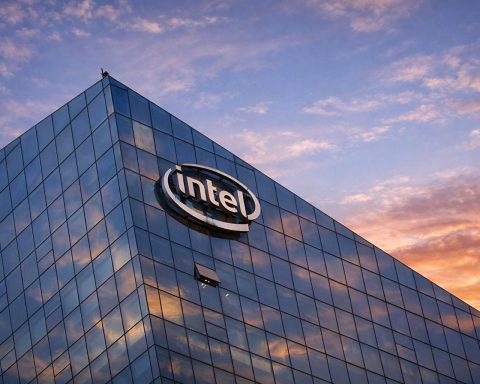- Takeover buzz sends shares soaring: Warner Bros Discovery (WBD) stock leapt sharply on Oct. 21, 2025 after the company announced a review of strategic alternatives in response to acquisition interest [1] [2]. The stock closed around $20.33 that day – up about 11% [3] [4] – extending a year-to-date gain of roughly 75% [5].
- Board rebuffs Paramount bid: Reuters reported that WBD’s board on Oct. 21 rejected a Netflix-backed Paramount Skydance offer of nearly $24 per share (roughly $60 billion) as “too low,” even as it confirmed that a sale could be on the table [6] [7].
- Multiple suitors reportedly circling: Insiders say several buyers have expressed interest. CNBC and other outlets named Netflix, Comcast and others as potential suitors. CEO David Zaslav noted it’s “no surprise” outsiders recognize WBD’s rich content library, and the board is seeking to “unlock the full value” of its assets [8] [9].
- Near-term volatility ahead: Analysts expect the stock to remain volatile. Any concrete bid (say in the mid-$20s per share) would send shares even higher, while a lack of deals or negative news could pull them back. Traders are also watching WBD’s upcoming Q3 earnings (Nov. 6) for clues [10] [11].
- Strong streaming but heavy debt: WBD’s recent financials show streaming growth but also challenges. In Q2 2025 the company added 3.4 million new global streaming subscribers and posted an unexpected profit, thanks in part to hits like “A Minecraft Movie” [12] [13]. However, its legacy cable business is shrinking, and WBD carries roughly $35 billion of debt [14] [15], a factor that any buyer must manage.
- Analysts mixed on stock: Wall Street is split. Many say WBD’s content makes it an attractive takeover target, but others warn the rally may have run ahead of fundamentals [16]. As of now, the average 12-month price target for WBD is only about $16–17 [17] [18], below its current price. Some firms remain cautious (e.g. KeyBanc noting the rally “may have gotten ahead of itself” [19]), while a few see upside if a deal emerges.
Shares Surge Amid Takeover Buzz
On Oct. 21, Warner Bros Discovery officially confirmed that it was exploring “strategic alternatives” after fielding takeover inquiries [20] [21]. In a press release, WBD said it had received “unsolicited interest…from multiple parties for both the entire company and Warner Bros.” [22]. The news ignited a buying frenzy: WBD stock jumped from around $18.30 before the announcement to about $20 by the day’s end [23] [24]. In dollar terms that was roughly an 11% one-day gain [25], adding to an already massive rally this year (shares are up roughly 75% since Jan. 1 [26]). The stock now trades near its 52-week high of about $20.58 [27].
WBD’s board said it has no set deadline and no certainty that a deal will occur [28]. But investors are excited by the possibility of a bidding war. As one analyst put it, media giants are under pressure to merge or buy content – “all roads lead to consolidation” for companies like WBD [29]. In fact, one early lead bidder is Paramount Skydance (the merged entity of Paramount Global and Skydance, backed by Netflix’s founders). Paramount’s chief David Ellison offered around $20 per share (~$40–$60 billion in total) last month, according to people familiar with the matter [30] [31]. Warner Bros Discovery deemed that bid too low and rejected it, which only fueled the stock’s advance.
Strategic Review and Potential Buyers
WBD’s review of alternatives highlights two main paths: complete sale of the company, or proceeding with its long-planned split. In June 2025, WBD announced it would spin off its movie/streaming assets (the old Warner Bros studios and HBO Max) from its traditional cable networks (Discovery Channel, CNN, etc.), creating two standalone companies by mid-2026 [32] [33]. The stated goal was unlocking value for shareholders by separating high-growth streaming businesses from declining TV networks.
The new twist is that WBD is now considering selling either the whole company or divisions separately. Officials say they will weigh everything from the original spin-off plan to an outright sale or a hybrid approach (for example merging the Warner Bros side with an outside buyer while spinning off the Discovery networks) [34] [35]. In their statement, executives stressed finding “the best path forward” to maximize shareholder value. CEO David Zaslav said he isn’t surprised major players “covet WBD’s vast content library,” and that management’s goal is to unlock full asset value [36] [37]. Board Chair Samuel Di Piazza echoed that the process is aimed at “best value for our shareholders” rather than any particular outcome [38].
Reuters reported that suitors beyond Paramount have been sniffing around. Comcast – owner of NBCUniversal – is said to have indicated interest in WBD’s assets [39], and a report on CNBC named Netflix and even Apple as potential bidders. (Netflix already teamed up with Ellison on the recent Paramount-Skydance merger, rebranded Paramount Skydance.) Any buyer would gain WBD’s marquee brands – HBO Max (now rebranded simply “Max”), CNN, DC Comics movies, Harry Potter franchises, etc. – but also inherit its heavy leverage: WBD carries about $35 billion of net debt [40] [41]. The company has said it plans to cut debt to roughly $30 billion by year-end [42], but that is still a burdensome amount, and analysts note that debt load could limit what a buyer is willing to pay.
Streaming Growth and Financials
Behind the headlines, WBD’s underlying business is a mixed picture. The company has refocused aggressively on streaming. In Q2 2025 WBD reported 3.4 million new global subscribers for its streaming platforms (driven by new HBO Max launches abroad), beating Wall Street’s forecasts [43]. That growth, along with major theatrical hits like “The Minecraft Movie,” helped WBD turn a surprise quarterly profit and lift overall revenue. For example, studio revenues jumped 55% in Q2 [44]. By contrast, the cable-TV side continued to struggle: traditional networks saw revenue fall (about 9% year-over-year in Q2 [45]) as viewers cut the cord.
On the bottom line, streaming finally went from loss to profit. WBD’s streaming segment generated roughly $293 million in adjusted profit for Q2 (versus a $107 million loss a year ago) [46]. Overall, the company earned $0.63 per share for the quarter (beating the loss-per-share that analysts expected) [47]. These results show that key parts of the business are improving, but many investors note that a single quarter of good results is not a cure-all. As one hedge-fund manager quipped, the big hit movies of the summer were “mere box-office cameos” that may not offset the long-term decline in cable TV [48]. WBD itself acknowledges that legacy TV advertising will keep facing headwinds; it even warned that TV ad revenue might fall further in coming quarters.
In short, Warner Bros Discovery is a turnaround play: its strength lies in premium content and a growing streaming empire, but it still must manage declining traditional media revenues and high debt [49] [50]. The spin-off plan was meant to address this by creating a pure-play studio/streaming company (with hopefully stronger growth and margins) while isolating the slower Discovery networks business. Investors have so far rewarded these efforts: WBD shares have climbed from under $10 in late 2024 to around $20 today [51] [52].
Analyst Commentary and Price Targets
Financial analysts have taken notice of the deal buzz and the stock’s rally, but they offer a range of opinions. Some see big synergy potential if WBD merges with a rival. For example, Wolfe Research’s Peter Supino estimates that a combined Warner–Paramount could achieve over $3 billion in annual cost savings by cutting overlaps [53]. Such synergies might justify paying a takeover premium. Bank of America analyst Jessica Reif-Ehrlich likewise notes WBD’s “wealth of premium IP” (everything from Harry Potter to Game of Thrones) and calls the company “an extremely attractive potential acquisition target” [54]. In fact, her team values the whole company at roughly $30 per share under an acquisition scenario [55].
But many analysts sound a note of caution. KeyBanc’s Brandon Nispel warns that WBD’s rally “may have gotten ahead of itself,” noting that bids in the $22–24 range are not guaranteed [56]. Wall Street’s consensus 12-month price target for WBD is in the mid-teens – around $16–17 per share [57] [58], well below today’s price. (By one calculation, 17 analysts put the average target at about $16.12 [59].) For example, Wells Fargo’s latest model (Oct. 2025) calls for a $21 target [60], implying very modest upside. Raymond James and Guggenheim have been somewhat more bullish (recently setting targets in the low $20s), while some firms like Goldman Sachs remain relatively bearish. The mixed ratings reflect the simple fact that WBD’s future hinges on an uncertain event: if no deal occurs, the stock could easily drift back toward the teens to reflect the company’s current fundamentals.
Behind these numbers, analysts highlight both strengths and risks. They credit WBD’s strong content franchises and an improving streaming business [61]. But they also note the high leverage – even after planned debt cuts, WBD’s balance sheet is still stretched [62] – and lingering weakness in traditional cable. One media strategist summed it up: “With high debt levels and continued challenges in traditional TV, some investors might be cautious and would like a ‘wow’ factor to get them excited” [63]. In other words, without a blockbuster merger or continued surprises in earnings, many analysts see only limited upside from here.
Outlook: Volatility Ahead
In the short run, WBD’s stock is likely to stay volatile. Any fresh hint of a deal (or lack thereof) could swing sentiment. Investors will watch for which companies get involved in a bidding war. For example, if Netflix or Comcast enters formally, or if private equity steps in, the stock could surge. Conversely, if no one steps up with a higher offer soon, the rally could fade. Traders are also eyeing WBD’s upcoming Q3 earnings (Nov. 6). In that report and conference call, executives will almost certainly face questions about the strategic review. A strong quarter — for instance, more streaming subscriber gains or cost savings — might keep hopes alive. A weak result, on the other hand, could reinforce the view that WBD’s future depends on a takeover.
Looking further out, the outcome of this process will ultimately determine the stock’s path. If Warner Bros Discovery does fetch a takeover bid in the low $20s per share or higher, that would hand shareholders a quick gain (subject to deal approvals). But if no buyer appears, WBD will revert to Plan A: splitting into two companies by mid-2026 as originally planned [64]. In that scenario, investors will be banking on the long game — that two focused companies might each trade at higher valuations once their strategies play out. Management has argued this breakup creates “compelling value” over time [65] [66], but it would be a slower, uncertain path compared to an immediate sale.
For now, most market-watchers remain cautiously optimistic that WBD’s sale review will produce some outcome above the status quo. The stock’s recent rally suggests investors believe a deal or a successful spin-off could justify its lofty valuation [67]. But all agree it’s a high-stakes drama: either Warner Bros Discovery sees a “blockbuster Hollywood ending” with a lucrative takeover, or it will have to “grind it out” executing its turnaround plan on its own [68]. Either way, the saga is far from over, and WBD’s fortunes – and share price – will likely stay in the headlines for months to come.
Sources: Warner Bros. Discovery press releases and filings; Reuters, Guardian, TS2.tech and other news coverage of WBD’s Oct. 2025 sale review; analyst reports and public statements [69] [70] [71] [72] [73] [74] [75] [76].
References
1. www.theguardian.com, 2. www.reuters.com, 3. www.reuters.com, 4. www.reuters.com, 5. ts2.tech, 6. www.reuters.com, 7. www.reuters.com, 8. ts2.tech, 9. www.theguardian.com, 10. ts2.tech, 11. ts2.tech, 12. www.reuters.com, 13. www.reuters.com, 14. www.reuters.com, 15. ts2.tech, 16. ts2.tech, 17. ts2.tech, 18. ts2.tech, 19. ts2.tech, 20. www.theguardian.com, 21. www.reuters.com, 22. www.theguardian.com, 23. ts2.tech, 24. www.reuters.com, 25. www.reuters.com, 26. ts2.tech, 27. www.reuters.com, 28. www.theguardian.com, 29. ts2.tech, 30. ts2.tech, 31. www.reuters.com, 32. ts2.tech, 33. ts2.tech, 34. ts2.tech, 35. ts2.tech, 36. ts2.tech, 37. www.theguardian.com, 38. ts2.tech, 39. www.reuters.com, 40. www.reuters.com, 41. ts2.tech, 42. ts2.tech, 43. www.reuters.com, 44. www.reuters.com, 45. www.reuters.com, 46. www.reuters.com, 47. www.reuters.com, 48. www.reuters.com, 49. ts2.tech, 50. ts2.tech, 51. ts2.tech, 52. www.investing.com, 53. ts2.tech, 54. www.reuters.com, 55. www.reuters.com, 56. ts2.tech, 57. ts2.tech, 58. ts2.tech, 59. stockanalysis.com, 60. www.benzinga.com, 61. ts2.tech, 62. ts2.tech, 63. www.reuters.com, 64. ts2.tech, 65. www.investing.com, 66. www.investing.com, 67. ts2.tech, 68. ts2.tech, 69. www.reuters.com, 70. www.reuters.com, 71. ts2.tech, 72. ts2.tech, 73. www.theguardian.com, 74. ts2.tech, 75. www.reuters.com, 76. www.reuters.com







